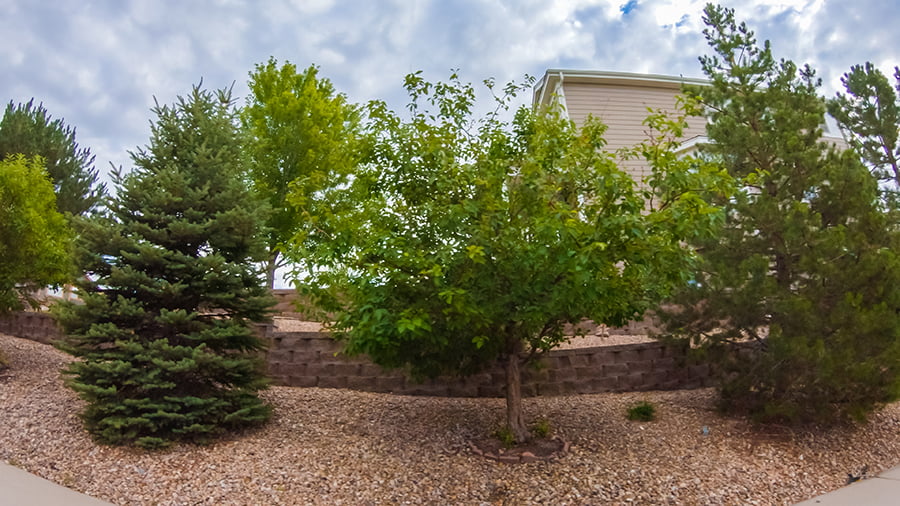Creating a xeriscape that provides privacy can be achieved by planting tall shrubs or trees, installing a fence or wall, or using natural elements such as rocks and boulders.
Creating a xeriscape that provides privacy can be a challenge. It requires careful planning, a good understanding of plants, and the right materials.
In this blog post, we’ll explore how you can create an aesthetically pleasing xeriscape that also offers the privacy you need. We’ll look at different types of plants and materials to consider, as well as tips for creating a beautiful yet private outdoor space.
Read on to learn more!
Look Inside:
Planning

It involves researching the area, considering the climate and soil conditions, and deciding which plants to use. Researching the area includes looking at existing vegetation, topography, sun exposure, wind patterns, and other factors that may affect plant growth.
Climate and soil conditions should also be taken into account when selecting plants for a xeriscape; some plants may require more water or sunlight than others. It is important to decide which plants will provide the desired level of privacy while still being able to thrive in the local environment.
By taking all these factors into consideration during planning, it is possible to create a successful xeriscape that provides both beauty and privacy.
Plant Selection

Xeriscaping is the practice of landscaping with plants that require minimal water and maintenance, making it an ideal choice for areas with limited resources or harsh climates. When selecting plants for a xeriscape, it is important to consider their size and growth rate in order to ensure they will provide adequate coverage and privacy.
Choosing native species can help reduce the need for additional watering or fertilizing as these plants are adapted to local conditions. Selecting drought-tolerant varieties can help conserve water while still providing ample coverage and privacy.
Layout Design

It involves planning the placement of plants, hardscapes, and other elements in order to create a visually pleasing and functional landscape. When designing a xeriscape for privacy, it is important to consider how the layout will affect the amount of sunlight and shade available in different areas.
Careful consideration should be given to how tall plants can be used as screens or barriers between spaces while still allowing air flow and light penetration. Strategically placed hardscapes such as walls or fences can also provide additional privacy when needed.
Fencing/walls

Fences and walls can be made from a variety of materials, including wood, metal, stone, or even living plants. Depending on the material used, fences and walls can provide both visual and physical barriers between your yard and the outside world.
For example, a wooden fence will block out views while providing some sound insulation; whereas a living wall of shrubs or trees will not only block out views but also absorb noise. Fencing or walls can be designed in various heights to provide more or less privacy depending on your needs.
Hedges/shrubs

Hedges are typically composed of multiple plants, such as evergreens or deciduous trees, planted in a row to form a barrier. Shrubs are single plants with woody stems that can be used to create a more natural look.
Both hedges and shrubs can be used together to provide both visual and physical barriers for privacy. When selecting the right type of hedge or shrub for your xeriscape, it is important to consider the size of the plant when mature, its water requirements, and how much maintenance it will require.
You should choose species that are native to your area so they will thrive in your climate without needing additional water or care.
Ground Cover Plants

These plants are low-growing and spread quickly, making them ideal for covering large areas of land. They can be used to form dense mats that block out views from outside the garden, providing an effective barrier against prying eyes.
Ground cover plants also require minimal maintenance and water, making them perfect for xeriscaping in dry climates. They come in a variety of colors and textures, allowing you to customize your landscape design with ease.
Trees/large Shrubs

Trees and large shrubs are an effective way to block out noise, wind, and unwanted views from neighbors or passersby. They also provide shade in the summer months, helping to reduce energy costs associated with cooling your home.
Trees and large shrubs can help improve air quality by filtering pollutants from the air. When selecting trees or shrubs for a xeriscape that provides privacy, it is important to choose species that are drought-tolerant and require minimal maintenance.
Evergreen varieties such as juniper or cypress are good choices because they will remain green year-round providing consistent coverage throughout the seasons. Deciduous varieties such as maple or oak may also be suitable depending on your climate zone; however they will lose their leaves in winter months leaving gaps in coverage until new growth appears in springtime.
